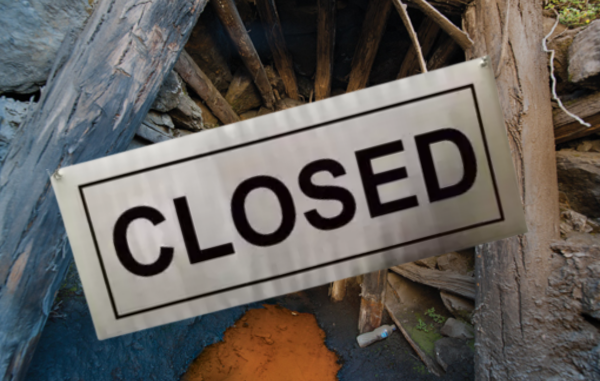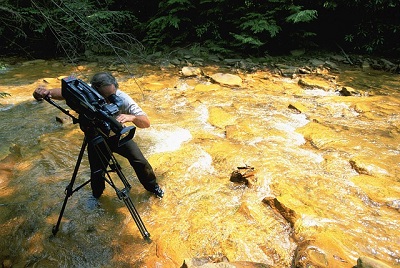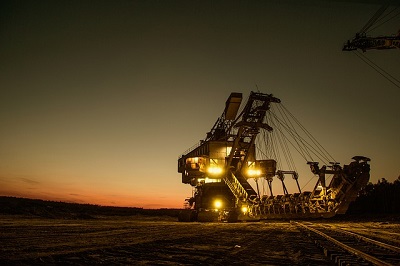

Founder: Turnaround Talk
I started my career as a mining journalist in 2007. It was a time when there was a commodities boom, and mining houses were the lifeblood of the South African economy. At the time, the Department of Mineral Resources (now the Department of Mineral Resources and Energy (DMRE)) was becoming stricter about the need for a proper environmental impact assessment playing an essential role in a company’s ability to apply for a mining licence or to open a new mine.
Fast forward 16 years, and this stringent policy lacks enforcement. In 2007, illegal mining was an issue; however, mining companies effectively dealt with it. It seems as if illegal mining is running rampant as companies lack the financial resources to implement their rehabilitation strategies fully, and they are allegedly using business rescue and liquidation as a loophole to avoid this.
Illegal mining damage
An EWN article points out that illegal miners in Mogale City have exposed a large, underground bulk water supply pipe that could potentially leave almost the entire city without water if it gets damaged.
The West Rand city is a former mining town, part of the 56-kilometre Witwatersrand basin that kicked off the gold rush in South Africa during the late 1800s.
However, centuries later, illegal miners are still digging for gold along the reef, and in the process, they are putting residents’ lives and critical infrastructure at risk.
In a large, unoccupied field located on the outskirts of Krugersdorp, there is a small-scale illegal mining operation.
The article adds that Businesses in Mogale City forked out over R250,000 to repair a road that was damaged due to a series of tunnels carved out beneath it by illegal miners.
Windsor Road, formerly known as Main Reef Road, was initially closed by the municipality for resurfacing.
However, after long, unexplained delays to complete the project, illegal miners took advantage.
The article points out that with no assistance from the municipality and the local police, businesses said they took it upon themselves to solve the issue before they have an illegal mining operation in their backyards.
Underneath Windsor Road are large deposits of gold-bearing material that has been mined illegally.
The road leads into an industrial business hub that suffered in the over four months since the road was closed and taken over by heavily armed illegal mining syndicates.

Image By: PublicDomainImages via Pixabay
Speaking on behalf of the businesses, Daan Joubert, a director at Payloads, told EWN they have been battling with illegal miners in the area for over five years.
Even after closing their tunnels, Joubert said this was not the last of them.
Violence broke out in Riverlea in August as illegal miners clashed with police who were clamping down on illegal mining operations.
If appropriately implemented, environmental rehabilitation plans will effectively shut down mines sufficiently enough to make them inaccessible to illegal miners. Media reports indicate that mining companies are not implementing these plans properly – due to lack of funding – and that illegal miners are taking advantage of this.
Another challenge of trust
I said in my intro that companies allegedly use business rescue and liquidation as an excuse to avoid implementing their environmental rehabilitation programmes because there is no solid evidence to suggest it. It was proposed in a lead story in an EWN news bulletin on 14 August.
However, a lack of evidence does not equate to zero abuse. Mining companies face a tough economic climate, with high demand for certain commodities and nearly zero demand for others. They have been forced to make tough decisions about closing mines, reorganising companies and moving cash around the business. It is entirely possible that funds that were supposed to be used for rehabilitation were used in another part of the company’s reorganisation.
What does the continued abuse of the business rescue process do for the profession and business rescue professionals? If mining companies are using business rescue and liquidation as a loophole to avoid their legal obligation to implement environmental rehabilitation programmes, urgent attention needs to be given to this by professional bodies and industry associations within the business rescue profession.
In its 2022 Restructuring Survey, Deloitte questioned the ability of business rescue professionals, stating that only a few professionals are suitably qualified to implement a business rescue plan successfully.

Image By: Khusen Rustamov via Pixabay
Further, the business rescue process faced significant public criticism during the following cases:
- the SAA business rescue, which is only just being finalised some three years later;
- the Comair liquidation; and
- the Edgars business rescue, where the public openly questioned BRPs’ fees.
And there are many more instances where things can go horribly wrong. The SAPO and the SABC may become further cases where open war on the business rescue profession may be declared.
The easiest way to cast dispersion on a profession is to abuse it.
This abuse and lack of trust can become problematic if we consider that the roles of Chief Restructuring Officers and Chef Transformation Officers will most likely be made up of professionals who are BRPs.
What is the next step? How do industry associations stand up to this abuse and ensure that the Department of Trade and Industry and the DMRE work together to ensure this abuse does not occur?




